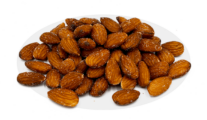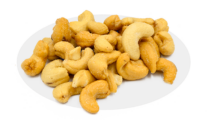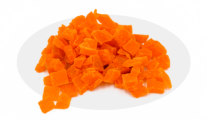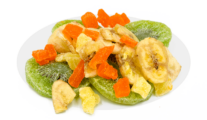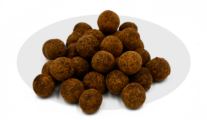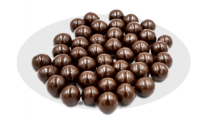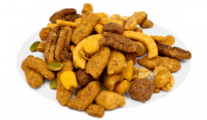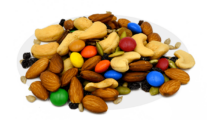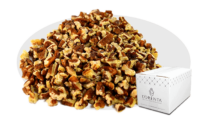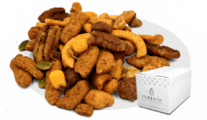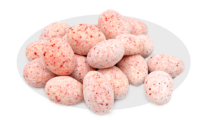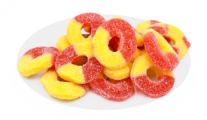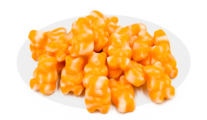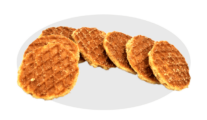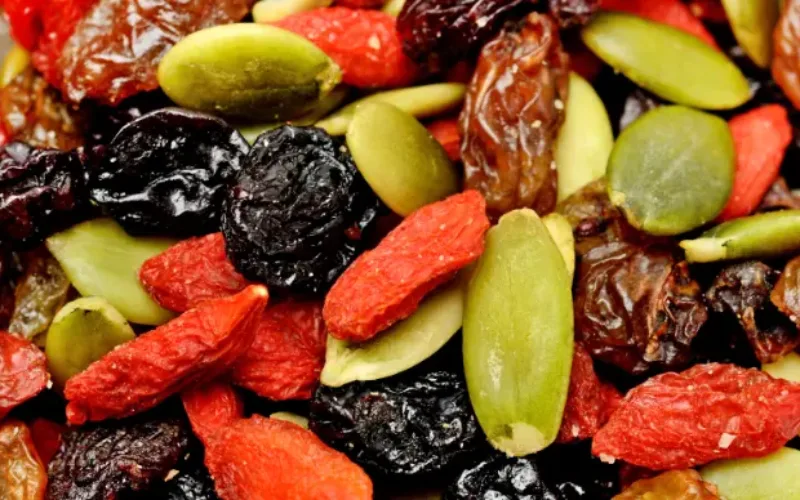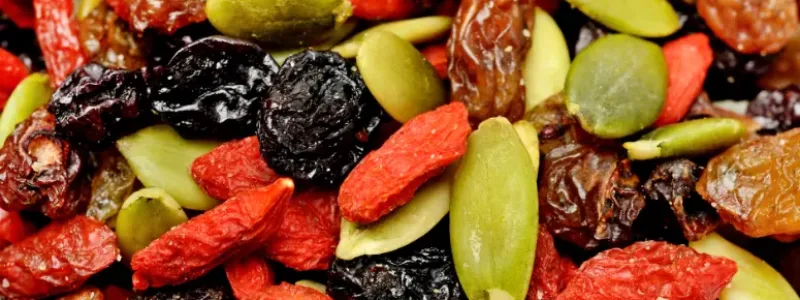Written By Sam Henselijn
What Makes Sour Candy Sour? Are you looking to become a sour candy master? Maybe you just really like sour candy and you want to know more about it? Either way, this will be your ultimate guide to all things sour candy!
What Makes Sour Candy Sour?
Since you are here, you likely know just how addicting sour candy can be. Sour candy is the perfect combination of sweet and sour, most often fruity as well. What is there not to love?
After experiencing the tart sensation of consuming this candy, many wonder exactly how candy makers make sour candy sour? In short, the answer is the addition of consumable acids. Let’s take a look at what that means, how these acids are accessible, and how sour candy becomes sour.
Acidic Coatings
Sour candies are designed to provide you with a shock of intense sour, followed by a sweet and fruity treat to soothe your tongue after. This sensation is created by mixing a few different acids to coat the candy with, leaving it that tart flavor we all crave. There are many different acids that can be used, and manufacturers choose the perfect combination depending on what kind of flavor combination, and level of tartness, they are trying to deliver.
Now that we know a little bit about the acidic coatings, let’s take a look at a few of the different kinds of acid!
Types of Acidic Coatings:
Citric Acid
This is the most common of the consumable acids. It is found naturally in citrus fruits like limes, lemons, grapefruit, and pineapples. Citrus fruits is where the word citric came from, giving this sour acid its famous name.
Citric acid is such a popular ingredient added to food that more than two million tons of it is manufactured every year. It was actually isolated for the first time in 1784 from lemon juice, due to the fact that lemons have one of the highest natural counts of citric acid.
To experience citric acid being used at its finest, try giving our Sour Wild Strawberries or Sour Neon Worms a try.
In addition to the uses in candy, citric acid can actually give you and your body many different benefits. It is a great antioxidant, and aids in your body’s production of energy. Those struggling with kidney stones can also benefit from the consumption of citric acid.
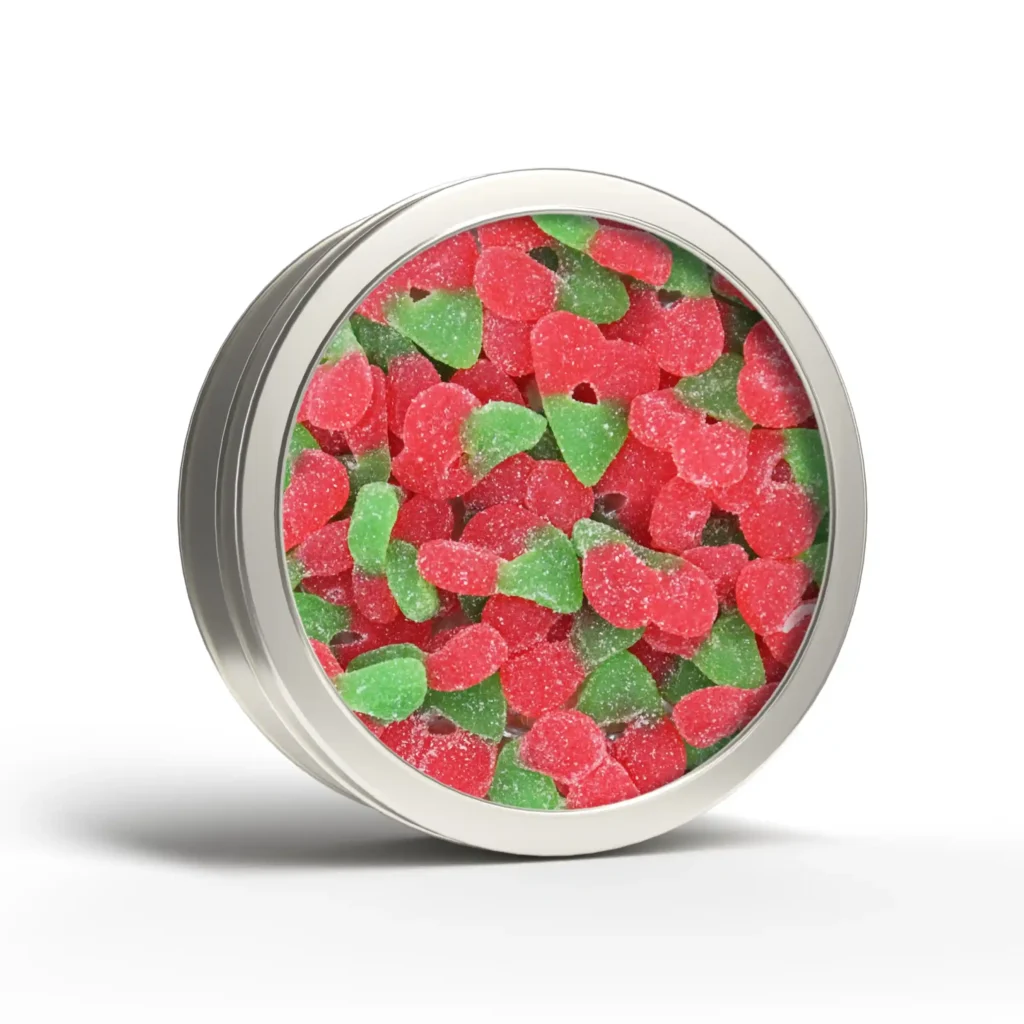
Malic Acid
Manufacturers use malic acid in candy when the sourness is supposed to linger. It gives a long lasting and persistent tartness to anything coated in it.
This acid was first isolated from apple juice in 1785, and its name was earned from the Latin word for apple. Malic acid can be found naturally in fruits such as apricots, plums, pears, and peaches. Of course, sour apples contain high levels of this acid as well.
Though malic acid will not be as sour as citric acid, the sensation will last longer and grow more intense the more you eat! If you want to try some candy with malic acid give Lemon Drops or Sour Flowers a taste!
Ascorbic Acid
Ascorbic acid, which is commonly known as Vitamin C, can not only provide you with dozens of health benefits, but it can actually be used as a sour additive! This is found mostly in citrus fruits, the big one being oranges.
In 1907 ascorbic acid was isolated from plants, starting the long history of using it as an additive for food and medicine.
Tartaric Acid
Though this acid is not as common as its counterparts, it can produce one of the most sour flavors. It has been used by winemakers for centuries, but the acid itself was first isolated in 1796. Due to its use in wine, it makes sense that grapes have one of the highest levels of natural tartaric acid.
Fumaric Acid
Last, but definitely not least, is fumaric acid. It is not one of the most popular consumable acids, but it is potently tart. It is often used as a replacement for citric acid, seeing as you need nearly half of the amount to achieve the same level of sour.
Fumaric acid has been used in food since 1946, and is found in all sorts of different products ranging from candy, to soda, to even salt and vinegar chips.
Why Does Sour Candy Make Me Sweat?
While sour candy is universally enjoyed, it is also known to bring some side effects along with it. Most people report that sour candy makes them feel hot, or even sweat. Why is this?
Well, this is due to the fact that while sour candy is delicious, it cannot be enjoyed in large amounts often. The acids found in sour candy wear down your teeth enamel, and can even burn your tongue, gums, or cheeks. When this happens, the nerves found within your body work immediately to heal the wounds. This causes an overproduction of saliva, as well as sweating.
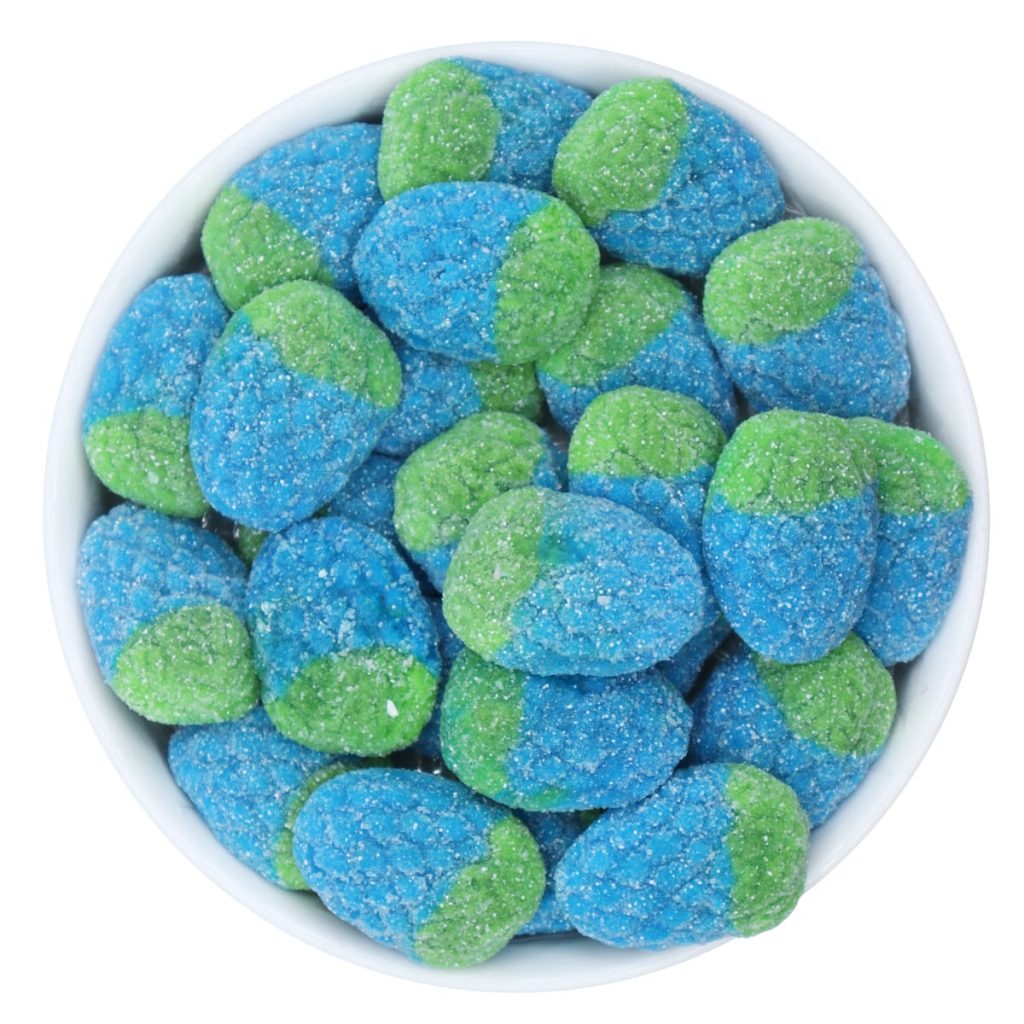
How Do You Make Sour Candy?
Those who are sour fanatics might enjoy making sour candy at home, rather than purchasing it all the time. Well, have no fear! Making sour candy at home is actually pretty simple, and could be a great family activity!
Sour Candy Recipe (Uses Citric Acid)
- Start by blending your choice of fruit. It can be frozen, or fresh. Either way, blend the fruit until it is nice and smooth. For this recipe, use 1 cup of your favorite fruit.
- Simmer the fruit. Add into a sauce pan the fruit you just blended, along with 1 cup of water, 1 tablespoon of lemon juice, and 2 tablespoons of honey. Simmer this on medium to low heat for a few minutes.
- Once the mixture begins to simmer, add 4 tablespoons of unflavored gelatin and whisk. Make sure you add the gelatin slowly to avoid clumping.
- Now that the gelatin is mixed in, bring it back to a low simmer and let the ingredients incorporate fully.
- After everything is combined and melted, remove the pan from the heat and strain the mixture to remove any remaining clumps.
- Once strained, you can pour the mixture into your choice of molds. Refrigerate for at least 6 hours to let the gummy candy fully solidify
- Next is to combine sugar and citric acid in a separate bowl. Start with a large bowl of sugar, and add a tablespoon of citric acid at a time. Mix, and taste in between until you have achieved your preferred level of sour.
- Coat the gummies in your sugar mixture, and enjoy!
Sour Candy Recipe (Uses Malic Acid)
If you are searching for an even more sour treat to enjoy at home, try making your own candy with malic acid! The process is a bit different, but still easy to do at home. Follow this recipe to try:
- In a saucepan, whisk together three parts sugar, four parts sour, and two parts water. To this mixture, add a packet of gelatin (you can choose flavored if you want a specific taste).
- Bring To a gentle boil, and stir continuously for 2-3 minutes once it begins to boil.
- Use a thermometer to check the temperature, and pull the pan from the burner when you reach 260 degrees fahrenheit.
- Pour this mixture into a greased pan, or molds, and leave it in the refrigerator for a few hours until it completely cools down.
- While your mixture cools, mix together a small amount of equal parts cornstarch and powdered sugar. Then pull out your candy, and coat the candy in the mixture.
- From there you can roll it in more sugar or malic acid if you wish for more tartness.
- Finally, allow the soft candy to dry until they harden.
Before we wrap this up, and begin calling ourselves sour experts, we need to learn about the history of sour candy!
History of Sour Candy
Until the 19th century, sour candy wasn’t too popular. Many people were worried about the acids used to make it, and the bright colors in which the candy came. However, in the 1950s sour candy got a popularity boost due to the commercialization of Halloween. Companies used this candy-loving holiday to boost their sales, growing the demand for sour candy quickly.
While candy itself has a National Holiday, sour candy grew so popular that July 18th was deemed National Sour Candy Day.
In 1962 Lemonheads were introduced, and the rest is history. People began to crave sour candy, and companies began experimenting with candy to see what all tasted good sour. We now can find sour candy in nearly any store around the world!


Now, after all of the fun reading above, you can call yourself a sour expert! You can now spread your new knowledge with those around you! Even better, now anytime you enjoy your favorite sour treat, you can think about how it was made, and why it makes your face pucker so badly. If you are in desperate need for some new sour treats, probably because you have tried everything you can find already, you need to try Gummy Halloween Spooky Sours or Sour Twin Cherries.
Sam Henselijn Author’s Biography – Meet L’Orenta Nuts CEO
Copyright 2024 L’Orenta Nuts
L’Orenta Nuts proudly holds the SQF food safety certification, symbolizing our unwavering dedication to upholding the highest standards of food safety and quality. This certification guarantees that our products undergo rigorous scrutiny, ensuring transparency, traceability, and adherence to global food safety regulations for the utmost consumer confidence.
L’Orenta Nuts has the HACCP (Hazard Analysis and Critical Control Points) certification is a systematic approach to identifying, evaluating, and controlling food safety hazards. It ensures that food products are produced and handled in a manner that minimizes risks and complies with safety standards.
Our GMP (Good Manufacturing Practices) certification ensures that a manufacturing facility adheres to comprehensive quality and safety standards while producing pharmaceuticals, food, and other consumer goods, promoting consistency, quality, and compliance with regulatory requirements.
L’Orenta is an FDA-approved manufacturing facility and has met the rigorous standards set by the U.S. Food and Drug Administration. It demonstrates compliance with regulations, ensuring the production of safe and high-quality food products.


